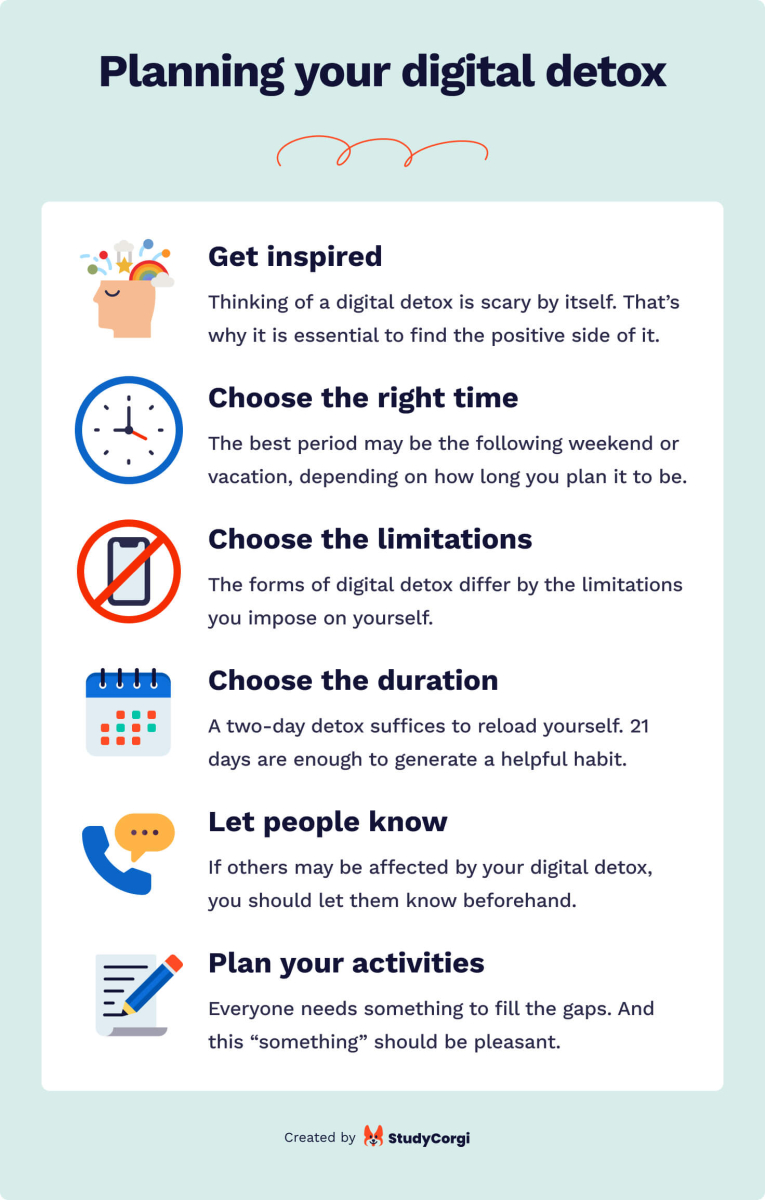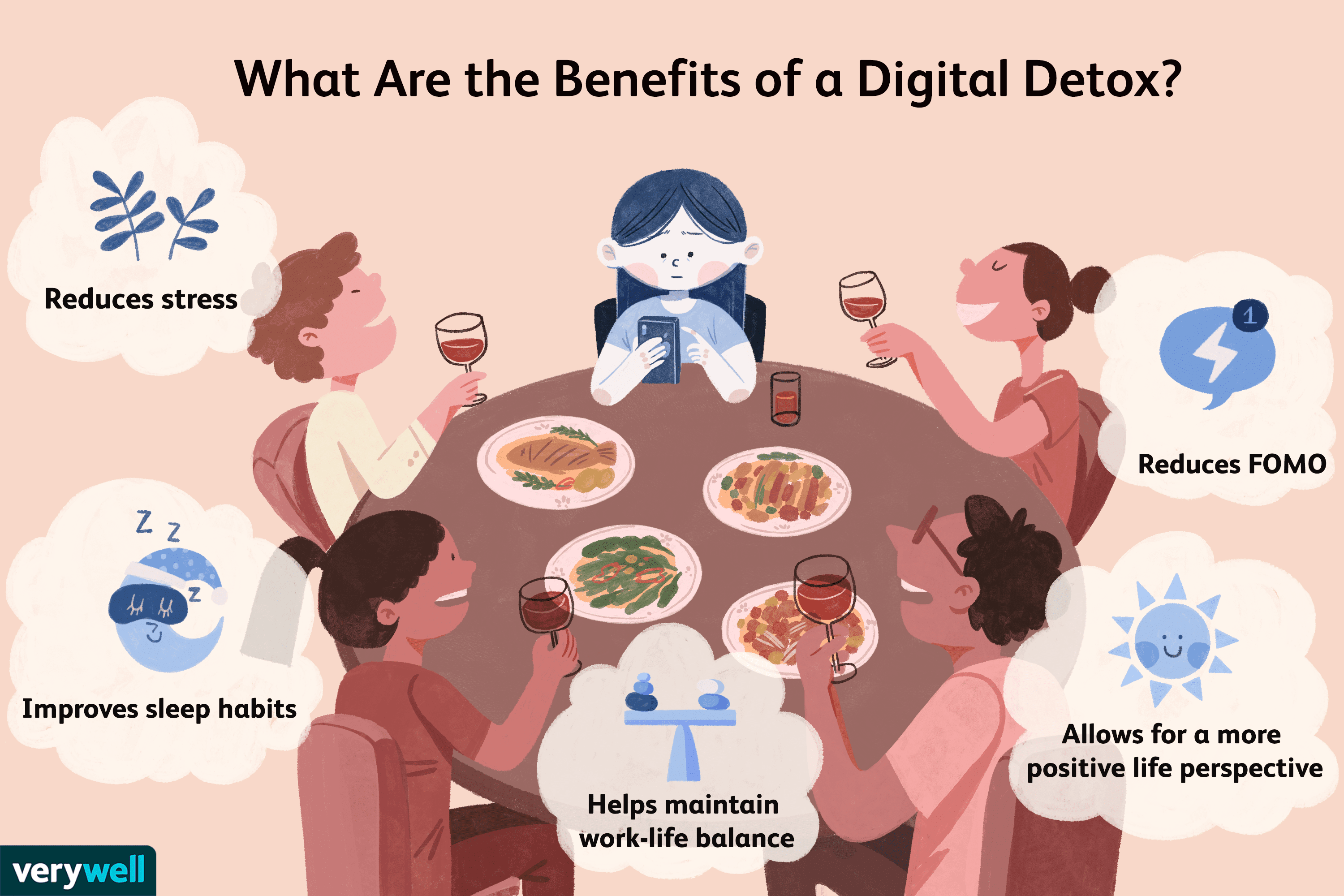How to Start a Digital Detox: A Step-by-Step Guide to Reclaiming Your Well-being
In today’s fast-paced, hyper-connected world, it’s easy to feel overwhelmed by the constant barrage of emails, social media notifications, and endless digital content. While technology has made life more convenient, it has also created new challenges related to stress, anxiety, and burnout. This is where a digital detox comes in—by intentionally disconnecting from screens, you can regain control over your time, improve mental health, and boost overall well-being.
If you’ve ever felt mentally drained or struggled to focus because of technology overload, this guide will walk you through how to start a digital detox, reclaim your focus, and feel more present in the moment. Whether you need a short-term break or a longer digital cleanse, this article will provide actionable steps to help you get started.
:max_bytes(150000):strip_icc()/why-and-how-to-do-a-digital-detox-4771321-FINAL-d129381fa4524c5db792951fd9b987d2.png)
What is a Digital Detox?
A digital detox is a period of time when you intentionally disconnect from electronic devices such as your smartphone, computer, tablet, and even TV. It is designed to help reduce the negative effects of technology overuse by giving your mind and body a chance to recharge. During a detox, you focus on offline activities, reconnect with yourself and others, and create boundaries to protect your mental health.
In a world where we are constantly available and bombarded with digital content, taking a break from technology can have profound benefits. It can improve mental clarity, boost productivity, and reduce stress levels. Let’s explore how to begin your journey towards a healthier relationship with technology.
Why Should You Start a Digital Detox?
Before diving into the “how,” it’s important to understand why a digital detox is so essential. Here are some common reasons to start your detox:
- Reduced Anxiety and Stress: Constant notifications and the pressure to be always “on” can increase stress. A digital detox helps to alleviate that.
- Improved Sleep Quality: Blue light from screens disrupts melatonin production, making it harder to sleep. Disconnecting can help improve your sleep.
- Increased Focus and Productivity: Taking a break from devices can help you focus better on important tasks, reducing multitasking distractions.
- Better Relationships: By disconnecting, you’ll have more meaningful face-to-face interactions with friends and family.
Benefits of Digital Detox:
- Recalibrate your mind: Clear your head and take a mental break from the constant flow of information.
- Restore physical health: Break free from eye strain, poor posture, and sedentary habits caused by long screen time.
- Reignite creativity: Disconnecting allows your brain to rest and refresh, helping boost creative thinking.
Step-by-Step Guide to Starting Your Digital Detox
Step 1: Define Your Goals and Intentions
The first step in any successful detox is to define your goals. Why are you disconnecting? Are you looking to reduce stress? Improve your sleep quality? Spend more time with loved ones? Clarifying your purpose will help you stay focused and committed throughout the process.
Questions to Consider:
- Are you seeking a short-term break, like a weekend detox, or do you want a more extended cleanse (e.g., a week or month)?
- What areas of your life do you want to improve by disconnecting?
- How will you measure the success of your detox?
Once you’ve defined your purpose, you’ll be better equipped to tailor your detox plan accordingly.

Step 2: Set Boundaries for Your Digital Devices
Now that you’ve defined your detox goals, the next step is to establish clear boundaries for your devices. This is where you’ll decide how much time you want to spend on screens each day and which apps or services you want to avoid.
Practical Tips for Setting Boundaries:
- Set Screen Time Limits: Use apps like Forest or Screen Time (on iPhone) to set time limits for social media and other distracting apps.
- Turn Off Non-Essential Notifications: Disable notifications for emails, social media, and other apps that are not crucial for your well-being.
- Schedule Technology-Free Times: Dedicate certain hours of the day to offline activities—for example, no screens during meals, an hour before bed, or the first hour after you wake up.
Step 3: Engage in Offline Activities
One of the best parts of a digital detox is the opportunity to engage in activities that don’t require technology. Whether you’re rediscovering old hobbies or exploring new ones, offline activities provide a much-needed break for both your mind and body.
Ideas for Offline Activities:
- Go for a walk or hike: Spending time outdoors in nature is a great way to reset your mind and relieve stress.
- Read a book: Instead of scrolling through your phone, read a physical book or magazine to stimulate your imagination.
- Spend quality time with family: Use the detox as an opportunity to reconnect with loved ones over board games, cooking, or simply talking.
- Exercise or meditate: Physical activity helps reduce stress and improve overall mental health.
Step 4: Disconnect Gradually
If the thought of a full digital detox feels overwhelming, start slowly. Begin by limiting your screen time gradually over the course of a few days or weeks. This allows your mind to adjust to less digital stimulation without feeling deprived.
Gradual Disconnecting Tips:
- Start with one day a week: Designate one day a week as a “no screen” day. Use this day to focus on non-digital activities.
- Reduce social media use: Try reducing your social media consumption by 10% each day until you’re only checking it once or twice a day.
- Limit device use to certain hours: Restrict your phone use to specific hours in the day (e.g., check email only in the morning and evening).

Step 5: Monitor Your Progress and Reflect
After completing your detox, take time to reflect on how it went. How did you feel before, during, and after disconnecting? Were you able to meet your goals? What benefits did you experience?
Tips for Reflection:
- Keep a journal: Document your thoughts, feelings, and experiences throughout the detox process. This will help you gain insight into how technology impacts your life.
- Measure changes: Track improvements in areas like productivity, sleep quality, or stress levels.
- Celebrate successes: If you’ve managed to reduce your screen time and reconnect with your personal life, celebrate that progress.
Step 6: Plan for Ongoing Digital Detox Practices
A digital detox doesn’t have to be a one-time event. Incorporate digital detox practices into your routine to maintain a healthy balance between online and offline life. Here are some strategies for ongoing digital wellness:
- Daily Tech-Free Time: Set aside time each day (even if it’s just 30 minutes) to disconnect from screens.
- Regular Detox Days: Plan regular detox days, where you completely unplug for 24-48 hours.
- Mindful Tech Use: Be more intentional about when and how you use technology. Use it to serve you, not overwhelm you.
Frequently Asked Questions (FAQs)
Q1: How long should I disconnect for?
A1: The duration of your digital detox depends on your goals and lifestyle. It can range from a few hours to several days. A weekend detox is often a great place to start.
Q2: Will a digital detox improve my productivity?
A2: Yes! By reducing distractions and allowing your mind to rest, you’ll be able to focus more and achieve higher productivity when you return to your tasks.
Q3: Can I still use technology during a digital detox?
A3: It depends on the rules you set for yourself. Some people opt for complete disconnection, while others limit usage to only essential activities (e.g., work or emergency calls).
Q4: How can I avoid the temptation to check my phone during the detox?
A4: Try putting your phone in another room, using apps to lock distracting apps, or leaving your phone in a drawer during your digital detox.
Conclusion
A digital detox is a powerful way to reconnect with yourself, reduce stress, and regain control over your time. By following the steps outlined in this guide, you can begin to carve out meaningful time away from screens and improve your overall well-being. Remember, the goal of a digital detox is not to reject technology altogether but to use it in a way that serves your life rather than controls it.
Start your digital detox today, and experience the benefits of a clearer mind, improved focus, and a renewed sense of balance. Your well-being depends on it!

